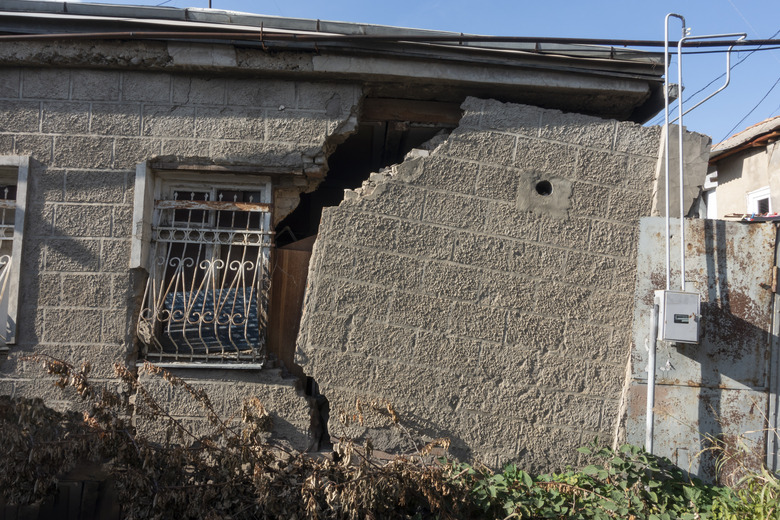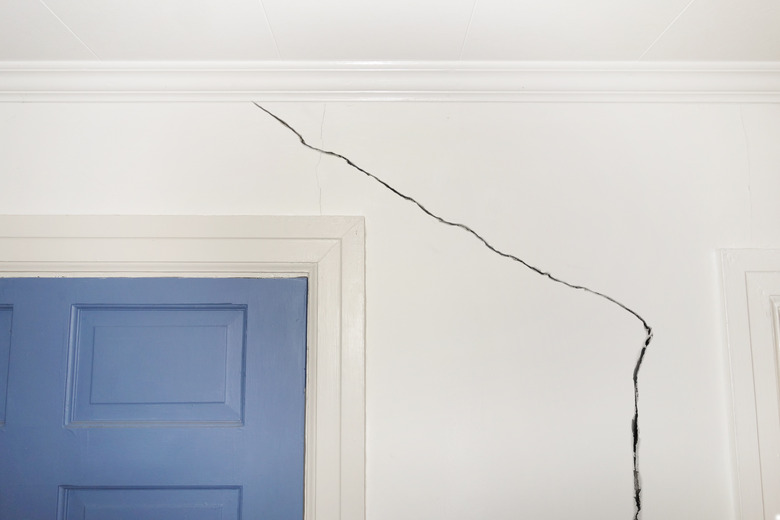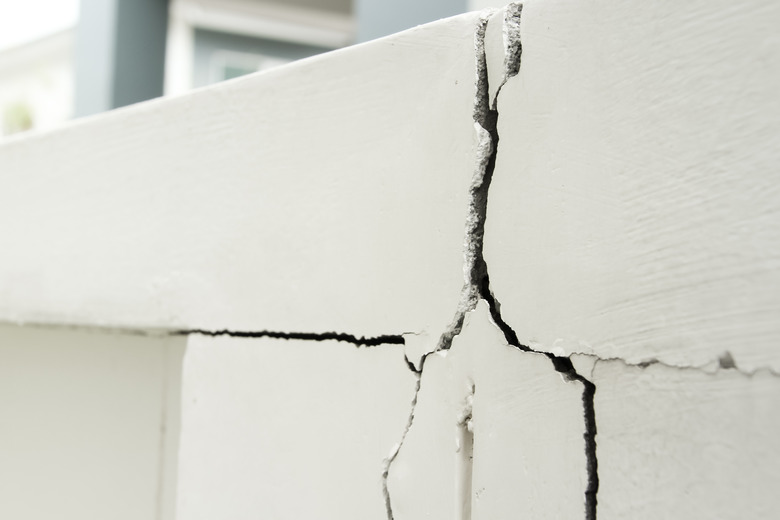Is Earthquake Insurance Worth It?
Homeowners' and renters' insurance policies both cover a lot of potential problems, but they won't cover damage from earthquakes. That means homeowners in California, Washington, Oregon and other quake-prone states need to purchase a special earthquake insurance policy if they want to be protected from this specific threat.
Tip
Whether or not earthquake insurance is worth it depends on multiple factors, including where you live, how your home was built, your income and more.
Where to Get Earthquake Insurance
Where to Get Earthquake Insurance
In California, the majority of earthquake insurance policies are purchased through the California Earthquake Authority (CEA), which is a publicly managed nonprofit organization created after many commercial insurance companies stopped offering coverage against earthquake damage or drastically jacked up the prices after the 1994 Northridge quake in Los Angeles.
You cannot purchase earthquake insurance with the CEA directly but must instead purchase a policy with them through your renters' or homeowners' insurance provider. This also means that you cannot buy stand-alone earthquake insurance through the CEA. You must have an existing rental or home insurance policy of some kind.
In other states, earthquake insurance may be available as an add-on to your traditional homeowners' insurance policy, or you may purchase a stand-alone policy from your insurer, another company or a statewide agency. Your insurance provider or your state's department of insurance website can help educate you on what options are available, but you may want to call around to compare rates among providers.
What Does Earthquake Insurance Cover?
What Does Earthquake Insurance Cover?
It's important to recognize what is and isn't covered by earthquake insurance since natural disasters, like earthquakes, can often cause other problems, like fires and floods, which are not covered by these policies. In general, earthquake insurance only covers the immediate damage that occurs just after seismic activity (usually for a 72-hour period), including volcanic damage. There are three different types of earthquake coverage, and you may need to pay an individual deductible for each type depending on your policy.
Dwelling coverage includes repairs to your home and attached structures, such as a garage, but may or may not cover other structures on your property, like sheds, pools or detached garages. That being said, brick and stone masonry are usually excluded from these policies because they are at far greater risk of damage in an earthquake, though you may be able to purchase additional coverage for these materials. Renters who purchase earthquake insurance, however, won't have this type of coverage.
Personal property coverage reimburses you for the cost of replacing damaged or destroyed personal belongings, such as furniture, computers and clothing. But keep in mind that there are usually limits on specific types of valuables, such as collectibles, furs and jewelry.
Additional living expenses coverage applies when your home becomes temporarily uninhabitable. This covers costs related to your loss of use of the home, including time you must spend in a hotel room and the cost of restaurant meals. If your home is a rental, it may also cover your lost income while the property is uninhabitable.
When buying earthquake insurance, keep in mind that some insurers will cover some things that others won't. Some things that are included in a standard policy or that may be offered as an add-on include:
- debris removal
- land stabilization
- energy-efficiency upgrades
- emergency
repairs - building code upgrades
Standard CEA policies cover:
- debris removal
- up to $10,000 for land stabilization when necessary for rebuilding the home
- up
to $1,500 worth of emergency repairs with no deductible - up to $10,000 worth of upgrades to comply
with modern building codes once your standard dwelling coverage deductible has
been met
Like all policies, earthquake policies are subject to policy maximums. Dwelling coverage is usually set at the same limit as that of your home insurance. Personal property damage coverage limits are usually set at either around $5,000 or 10 percent of your dwelling coverage, though you may be able to pay an increased premium to raise this amount. Additional living expenses coverage typically starts at $1,500, though it can be increased as well. The CEA allows buyers to purchase plans with up to $200,000 in personal property damage coverage and $100,000 in additional living expenses coverage.
What Does Earthquake Insurance Not Cover?
What Does Earthquake Insurance Not Cover?
Some things that are never included in earthquake insurance coverage include damage to your vehicle or any damage related to fires, sinkholes or floods. That's because these types of damage are covered by other policies. Comprehensive auto insurance will reimburse you for vehicle damage, fire damage is covered by your standard homeowners' insurance policy and sinkholes and floods require specific sinkhole or flood insurance policies or policy add-ons. It's important not to overlook these risks. After all, the majority of damage from the famous San Francisco earthquake of 1906 wasn't caused by the quake itself but from the resulting fires.
The Cost of Earthquake Insurance
The Cost of Earthquake Insurance
The rates for earthquake insurance vary dramatically from a few hundred dollars a year to a few thousand. The closer you are to a fault line, the more expensive your premiums. The national average cost for earthquake insurance falls between $100 and $300 per year, but states with increased seismic activity have higher premiums that average around $800.
Factors that affect your earthquake insurance rates include:
- Your deductible
- The plan's coverage limit
- Whether you purchase any add-ons
- The insurer from whom you purchase your plan
- Your ZIP code (expect to pay more if you live near a fault
zone) - The year your home was built
- The number of stories in your home
- Your home's value
- Your home's building materials
- Your home's foundation type
- Your home's roof type
As an example of how your coverage choices can affect your rates, the cost for a renters' insurance plan from the CEA for a 50-year-old, single-story home in an area with moderate to high earthquake risk could be as low as $35 a year if it has a high deductible, minimal loss of use coverage and no coverage for breakables. One with a low deductible, maximum loss of use coverage and coverage for breakables would be around $300.
A homeowners' policy for the same home worth $500,000 would cost about $130 if it came with a high deductible, minimal personal property and loss of use coverage and no coverage for breakable items. If that same homeowner wanted a low deductible and maximum coverage for personal property, loss of use and breakables, the policy would be about $600.
What’s the Deductible?
What's the Deductible?
One of the tricky things about buying earthquake insurance is that buying a plan with a low deductible will increase the price of your policy, but if you buy a plan with a high deductible, you may end up not getting benefits from the plan in the event of an earthquake. Earthquake insurance has traditionally been known to have high deductibles (often between 10 and 20 percent of your home's insured value), and many plans require a separate deductible for dwelling and personal property coverage, meaning you'll have to subtract that amount from both claim payments.
When determining whether or not earthquake insurance is a good option for your home, it's important to do research not just on the coverage and price of the plan but the deductible as well because it is such an important part of your coverage.
As an example, if your home is insured for $400,000 and you have a deductible of 15 percent, that means $60,000 would be deducted from your dwelling coverage claim. So, if an earthquake caused damage to your home that required some basic repairs rather than a full rebuild, you might not have suffered enough damage to get any money from your claim.
Similarly, if your property coverage limit is $50,000 and you have a deductible of 15 percent, you would need to suffer more than $7,500 worth of damage to your personal belongings to recover any money from your claim that you filed. Even if you incurred $65,000 worth of loss, you wouldn't be able to get any money from your claim if $59,000 was damage to your home and $6,000 was damage to your property since each category has its own deductible.
The high dual deductibles paired with high rates caused many people to refuse to buy plans from the CEA for a long time, though the organization now offers deductibles as low as 5 percent and the opportunity to have a single deductible for all types of coverage. It has also reduced premiums by 50 percent over the last few years. In fact, the previous high rates and high deductibles of CEA plans are often cited as a major reason that around 90 percent of Californians don't have earthquake insurance. If you're one of the state's many residents who previously believed earthquake insurance wasn't worth the cost, you may want to see what options the CEA now offers.
How High Is the Risk in Your Area?
How High Is the Risk in Your Area?
It's important to remember that while earthquakes can and do occur in all 50 states, the majority of larger natural quakes take place in California, Oregon, Washington, Alaska and Hawaii, while fracking-induced earthquakes have become increasingly common in Texas and Oklahoma. If you're not sure of the risk in your specific area, the U.S. Geological Survey makes it easy to find out more about earthquakes in your area. It's worth noting that if you want to get a mortgage or refinance your home and you live near a fault line, many lenders will actually require you to purchase earthquake insurance.
What’s the Risk to Your Home?
What's the Risk to Your Home?
Knowing the risk of quakes in your area is only part of the equation in determining the danger to your specific home. Your home's construction also matters quite a bit. Brick, concrete and stone masonry do particularly poorly in quakes because they are rigid and do not flex in an earthquake, causing these structures to quickly tumble to the ground instead. This is why California building codes have prohibited unreinforced masonry buildings since all the way back in 1933. Needless to say, if you live somewhere prone to quakes and have a home made from brick or stonework, you should probably purchase earthquake insurance even if the masonry ends up making your premiums cost a bit more.
Beyond masonry, your home's ability to survive an earthquake will depend on many other factors, including the framing and roofing materials, the number of stories and the type of foundation. Sometimes, it can even be beneficial to hire a building inspector to help you evaluate how resistant your home will be to earthquakes. If they say your structure will hold up fairly well in a quake, you might decide that earthquake insurance isn't worth it. On the other hand, if they say your home is likely to collapse during even a minor quake, buying coverage is probably a good idea.
Is Earthquake Insurance Worth It?
Is Earthquake Insurance Worth It?
Those who live outside the quake-prone states don't really have much to worry about when it comes to earthquake damage, though some people find the low cost of earthquake insurance in these areas makes it worth buying just for the peace of mind.
If you live in a moderate-risk or high-risk area, though, you'll need to weigh the pros and cons. Keep in mind what kind of coverage is available as well as the deductibles, limits and overall premium cost. If your home is relatively earthquakeproof, you may find yourself better off with standard homeowners' insurance with a flood add-on policy to protect you from earthquake side effects that aren't covered in earthquake insurance.
Remember that losing your home and your personal belongings can be devastating. While groups like the Federal Emergency Management Agency may help provide you with food and shelter in the short term, it won't help you rebuild your life. If you don't have earthquake insurance, you're going to have to rely on whatever you already have in the bank. If your home is likely to be destroyed in a quake and you can't afford to rebuild or replace your property after a disaster, then earthquake insurance might be a good option to protect you from this possibility.
References
- Forbes Advisor: Should Earthquake Insurance Be Part Of Your Disaster Plan?
- NPR: Quake Insurance? California Wants People To Say Yes To Coverage
- California Earthquake Authority: Get Your Free California Earthquake Insurance Estimate
- California Earthquake Authority: CEA Homeowners Policy Coverages & Deductibles
- NerdWallet: Complete Guide to Buying Earthquake Insurance
- California Earthquake Authority: Claim Manual


